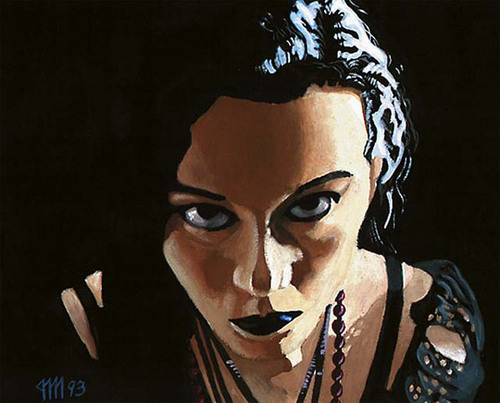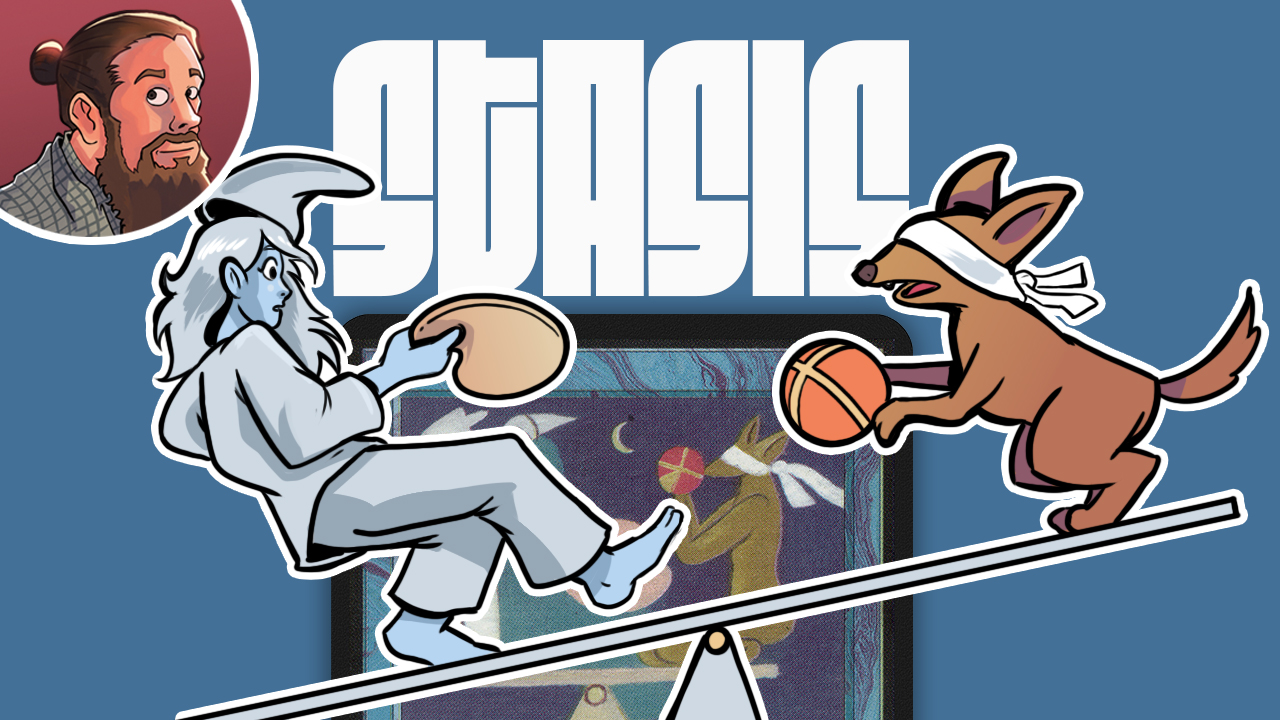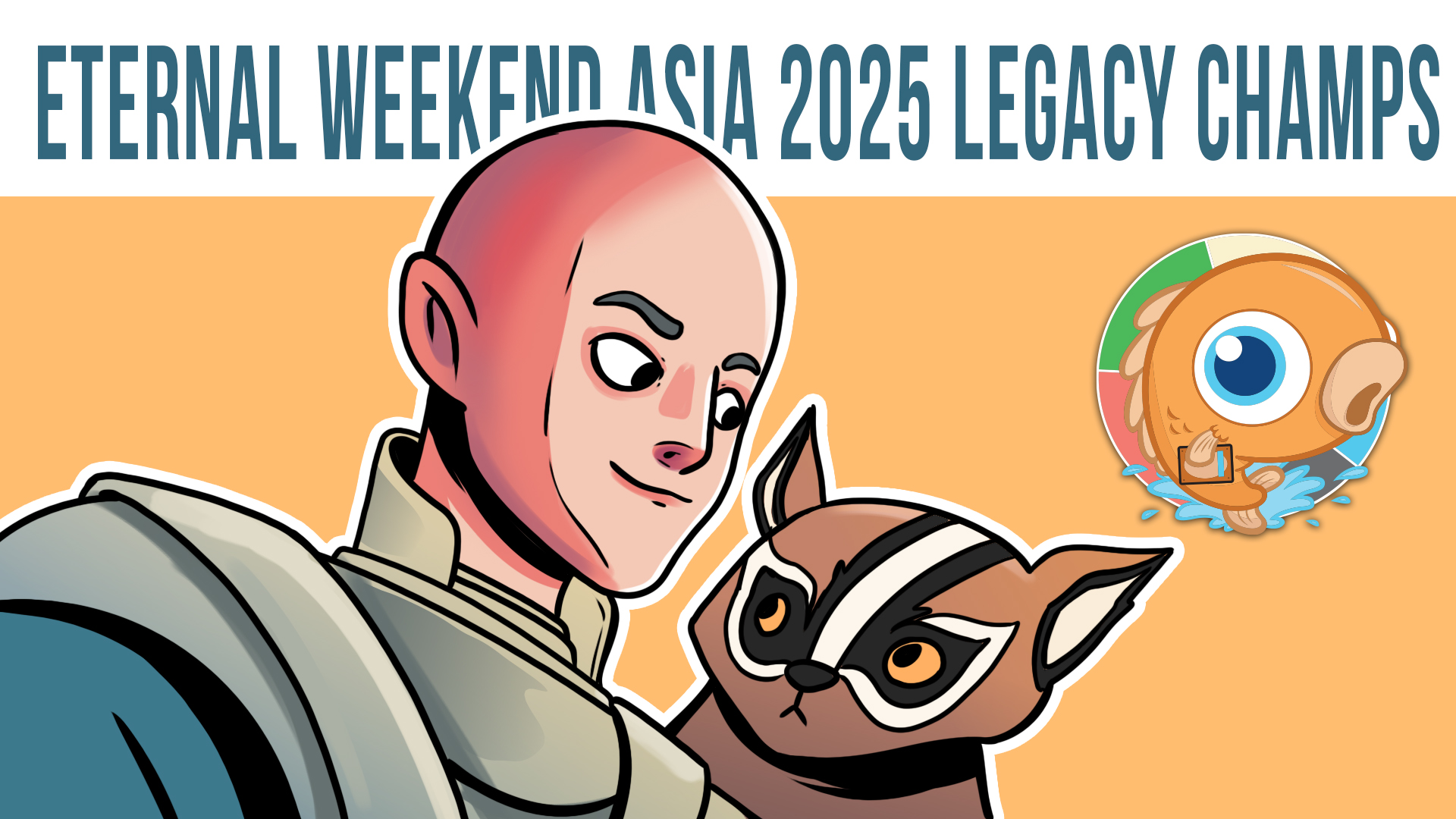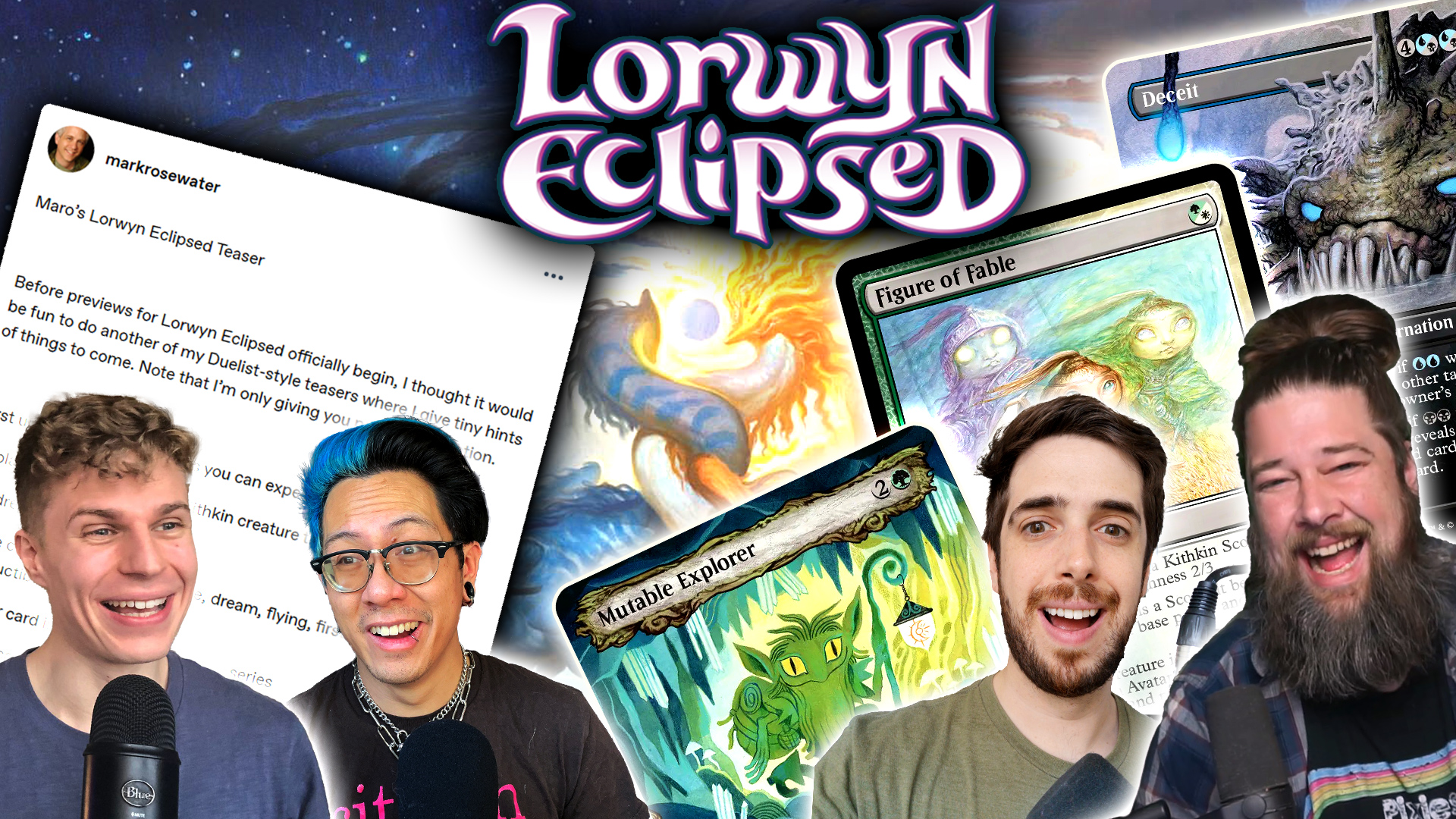Magic History: Art of Darkness with Jesper Myrfors

Elves of Deep Shadow by Jesper Myrfors
In the Beginning
Magic: the Gathering is the world's oldest trading card game, and as such there is a rich history behind our beloved game of dueling planeswalkers. A lot has changed about Magic since it debuted in 1993, and for many contemporary card-slingers the details of what has transpired are cloudy at best.
The abridged version of the story began when Peter Atkinson asked Richard Garfield to produce a game that could be played in the downtime between roleplaying sessions at conventions. The resulting game that Garfield pitched to Atkinson is what we know as Magic today.
Early on in the development of the first core set, "Limited Edition" (colloquially known as Alpha) had been using play-test cards printed on sheets of paper. The mechanics and names of the cards had been developed out of necessity, and the direction the art would take was still undecided.

Early play-test cards, courtesy of Keith "The Misprint Guy" Adams
In the early 1990's, Jesper Myrfors was an art student at the Cornish College of the Arts. Jesper was himself an avid gamer and managed to obtain a job at the fledgling Wizards of the Coast. Eventually Jesper would be made part of the team that was developing Magic: the Gathering, and he became the very first art director.
Today you can't touch a pack of Magic cards without noticing Jesper's work. The Magic card back, resembling a wizard's tome of spells, was designed by Jesper. The frames of the cards bear his handiwork, and together with the late, great Christopher Rush they designed the mana symbols.
The Art of Magic
Today Magic players tend to take it for granted that we are given great new pieces of art with each new Magic set. Most people are probably unaware that at one time the powers that be weren't going to use new art at all for Magic: the Gathering. The original plan was to use "recycled" art, pieces that had been commissioned for other fantasy games like Dungeon and Dragons. Luckily for all of us, the original art director (Jesper Myrfors) knew that Magic was a special game, and it deserved equally special artwork.
As an art student himself, Mr. Myrfors knew many young artists eager for work, and he used these contacts to gather the first wave of Magic artists. Some of the greatest artists the game has ever had, like Christopher Rush, Quinton Hoover, Amy Weber, Anson Maddocks, all made classic pieces of art that still resonate with contemporary Magic fans.



The Dark
Magic: the Gathering has recently gone back to one of the most popular planes that we've ever visited, Innistrad. Based on Gothic horror, Innistrad was a wildly popular set full of dark imagery, and Shadows Over Innistrad brings the storyline back to the plane of Werewolves and Vampires. Innistrad wasn't the first set to have such dark and gloomy themes. That honor belongs to a little set that came out in 1994.
The Dark was released in the time period between Legends and Fallen Empires. The small set, with its crescent-moon set symbol, contained 119 cards dripping with flavor. Loosely inspired by the real dark ages in medieval Europe, The Dark had themes of sickness, poison, and sacrifice. The set was designed by none other than Jesper Myrfors himself.
Twenty-two years later people are still enthralled by some of the cards from The Dark. While only a small handful see play in modern-day DCI sanctioned constructed tournaments, there are many more cards that are staples in the Commander formats and "Oldschool" formats that only allow older Magic cards.
Blood Moon is probably the most widely-played card from The Dark. Today it can be found in Modern, Legacy, and even Vintage decks where it utterly destroys people and their carefully-crafted mana bases.

The Dark also brought us cards like Maze of Ith and Tormod's Crypt, and everyone's favorite Red Deck Wins blitzkrieg creature, Ball Lightning. The set also had some less-than-memorable cards. Sorrow's Path is regarded as the worst card of all time. Limited Edition, Arabian Nights, Antiquities, and Legends all contained a few cards that were considered problematic to competitive play, and many had to be restricted at one point or another. The Dark and Fallen Empires (released afterwards) both made efforts to not contain such broken cards, and the result was a power level that was lower than what people were used to.
Still, even without cards like the Power Nine, the Abyss, or Mishra's Workshop, The Dark was a set that really spoke to me through its vivid imagery and eerie flavor. The crescent moon expansion symbol evoked feelings of a Halloween night, and card like Amnesia set the tone for the "darkness" of The Dark.

Lord Ith Himself
Today I have a treat for all of you who are interested in the history of Magic — the original art director of Magic: the Gathering, Jesper Myrfors.
Islandswamp: When did you know that you wanted to be an artist?
Jesper Myrfors: For as long as I can remember. I think the first time I told my parents that I wanted to be an artist I was four years old. My parents had a friend from the Ukraine who was a historical painter and that was the first time I realized that it was a viable career. He was also my fencing instructor for a while.
Islandswamp: How did you end up working for Wizards and becoming the art director?
Jesper Myrfors: I went to Cornish College of the arts. It was a good school but they did not believe fantasy art was a “thing,” so in order to prove them wrong I promised myself that I would get work before going back for my senior year. To that end I contacted a bunch of companies with my portfolio. I contacted Wizards of the Coast because they made a game I really enjoyed (Talislanta) and they were local. At first they reject my portfolio and suggested I send it to White Wolf (which I did and got work), but I asked to prove myself by doing a piece on spec. I passed the test and just started showing up and helping at the company until they hired me as art director. I did know a lot about fantasy art and artists, what with [it] having been my passion since childhood.
Islandswamp: As art director, how did you go about finding artists to illustrate the cards?
Jesper Myrfors: I used many artists I had worked with on RPGs previously, as well as people I went to school with. I also took recommendations from other art directors.
Islandswamp: When designing the original card frames and card backs, what where you going for?
Jesper Myrfors: Internal consistency. I really wanted the game to have its own look and not look like every other fantasy game out there. I wanted it to stand out and be its own thing. It’s one of the reasons I did not hire many established artists even though I was a big fan of their work. I did not want the game just looking like a card version of Dungeons and Dragons or Warhammer.
Islandswamp: I know that you're an avid gamer, was there a particular Magic deck that you enjoyed playing back in Magic's early days?
Jesper Myrfors: The decks I liked playing were before there were even restrictions on the number of a type of card that could be included in a deck, so none of them would apply or make sense to today’s players. I do miss ante though, it added an edge to the game. I did enjoy my blue “Shut Down” deck though. It essentially brought me to 1 life but cut off the opponent’s ability to do anything without killing themselves. So to start it looked as if they would have an easy victory against me, but that would slowly turn around until their defeat was inevitable.

Islandswamp: Recently Magic has revisited Innistrad, the Gothic Horror plane. In my mind the original dark and gothic set was the set you designed, "The Dark." How did you end up as the designer for the set?
Jesper Myrfors: Wizards was not the most organized company back in the old days. I saw a hole in the release schedule that no one was talking about and set out to design the set I wanted to do artwork for. I knew that odds were good that if they did not have a product in mind before I could finish, that they would use my set. It worked. In life it really is about audacity.
Islandswamp: What inspired you to make a set with a theme like the Dark Ages?
Jesper Myrfors: My love of horror and my distrust of organized religion went hand in hand to create the theme to that set. While it appears the set owes a lot to the Dark Ages, it also owes much to the Spanish Inquisition and American puritanism. It was a set in which I wanted to show that White was not all kisses and flowers, that White could descend into theocracy and fascism.



Islandswamp: Is there a card from the Dark that is your favorite?
Jesper Myrfors: Not really. Though Elves of Deep Shadow is from that set and I think it’s my best piece for the game. I also kind of shot myself in the foot with that set. Since the 1980's my online handle in games has been Ith. So I put that name in the set as an inside joke, now I can’t get the name Ith when I want it because it has entered the public conscious and an earlier adopter inevitably snags the name before I can use it.
Islandswamp: What was your favorite part about designing The Dark?
Jesper Myrfors: Being able to let my imagination run wild. I also really enjoyed working with Steve Bishop and Beverly Marshall Saling, they both helped with the set design.
Islandswamp: If you had to design "The Dark" again today, is there anything you would do differently? Would Sorrow's Path still make the cut?
Jesper Myrfors: I honestly don’t remember the mechanics that well, so it’s a tough one to answer. I think I would have been less concerned with addressing balance issues from past sets and perhaps have concentrated on putting in some cards that would stand the test of time.
Islandswamp: What kind of artwork have you been doing lately?
Jesper Myrfors: I have been doing a lot of reimaginings of my old Magic work now that I am back on the convention circuit. I am also writing and doing game design. Brian Snoddy and I made a game called Deadfellas, and we have several more that we are working on. I am also working on a video game.


Islandswamp: Some of my favorite cards as far as artwork is concerned are Atog and Demonic Hordes. Are you still painting versions of these on play mats and such?
Jesper Myrfors: Often. I really enjoy both subjects and many people want their own original of either subject. People who want to commission something from me can contact me though Facebook either as me or through the Mini Magic page. Mini Magic is a line of small affordable hand painted recreations of my earlier Magic work. The line has been doing rather well.
Islandswamp: If a fan wanted to get their card signed, what's a good way to accomplish that? Do you make Grand Prix and convention appearances?
Jesper Myrfors: Meeting me at a GP is the best way. It makes me uncomfortable to get cards through the mail as some have been lost, and I feel badly for the people whose cards go missing. If anyone has any questions for me though, I am always happy to answer through Facebook.

Wrap-Up
The Dark may not be the kind blockbuster set that Antiquities or Legends were, but it is an important part of the legacy of a very important man. Without Jesper's influence, I might not be sitting here writing this article. The incredible artwork found in early Magic releases owes its existence to a group of amazing artists, and to an art director with the vision to hire them in the first place. After all, it was the artwork that initially drew me to the game. The mechanics of the game are important too, but the artwork is the first thing we see, and first impressions are critical.
I'd like to thank Jesper for taking the time to answer my questions. There's a rich and interesting history behind Magic: the Gathering, but without hearing from the folks who made it happen, the stories remain untold.
If you're interested in learning more about the history of Magic, stay tuned for more articles in this series and check out Titus Chalk's book, "So Do You Wear a Cape?".
You can follow me on Twitter @josephfiorinijr - Islandswamp on MTGO














